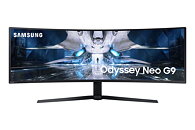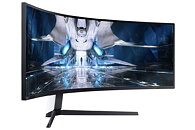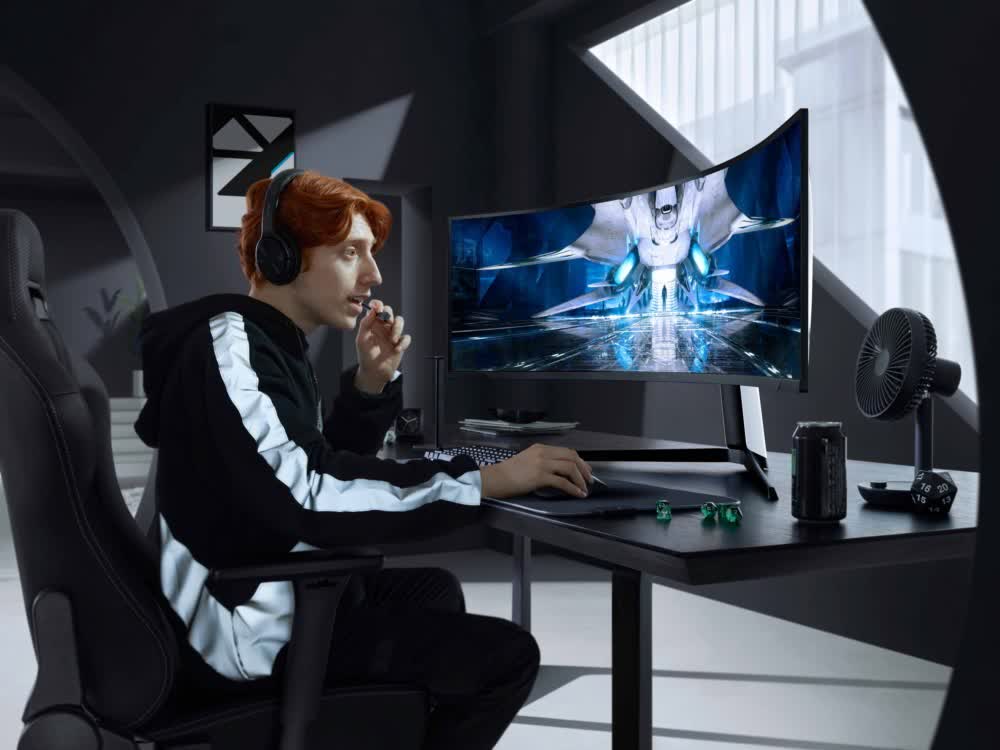Samsung Electronics, today announced the global launch of its next-generation curved gaming monitor, the Odyssey Neo G9, enhanced with Quantum Mini LED technology. The Odyssey Neo G9 joins the Odyssey lineup, taking gaming to the next level with Quantum Matrix technology, supported by Quantum Mini LED display and Quantum HDR 2000 for an immersive gaming experience.
With the previous launch of the Odyssey G9 in 2020, Samsung pushed the boundaries of premium gaming monitors with smooth and brilliant picture quality. Now with the industry's first Quantum Mini LED curved display delivering the most refined detail regardless of the game played, the Odyssey Neo G9 is catapulting the gaming monitor category forward. Featuring Quantum Matrix Technology combined with super-fast response and refresh rates, Odyssey Neo G9 delivers an unrivaled dynamic picture and premium performance for all gamers.


The Odyssey Neo G9 utilizes the same Mini LED technology built into Samsung's latest Neo QLED lineup. This next-generation display technology is enabled by a new light source, Quantum Mini LED. At 1/40 the height of a conventional LED,1 the Quantum Mini LED has incredibly thin micro layers filled with many more LEDs.
Additionally, Quantum Matrix Technology, which harnesses enhanced 12-bit gradation for greater control of the light source - the Quantum Mini LEDs makes dark areas darker and bright areas brighter with 2,048 dimming zones, ensuring viewers enjoy the content as it is meant to be seen. Quantum HDR 2000 offers a peak brightness of 2,000 nits, with certification received from VDE (Verband Deutscher Elektrotechniker), alongside a static contrast ratio of 1,000,000:1. In addition, Samsung's cutting-edge picture quality technology provides perfect black and white levels, for unparalleled contrast and immaculate detail.
Based on the high performance technology pioneered by the current Odyssey G9, the Odyssey Neo G9 features an ultra-wide 49-inch display with a 32:9 aspect ratio that offers Dual Quad High-Definition (DQHD; 5,120×1,440 resolution) with a rapid, 240 Hz refresh rate and 1 ms response time. The futuristic and immersive 1000R curvature of the monitor was certified by TÜV Rheinland, a leading international certification organization, awarding it their Eye Comfort certificate.
The Odyssey Neo G9 provides Adaptive Sync on DisplayPort 1.4 and HDMI 2.1 VRR (Variable Refresh Rate) through HDMI 2.1 with NVIDIA G-SYNC Compatibility and AMD FreeSync Premium Pro, delivering dynamic and seamless action scene-by-scene for a groundbreaking gameplay experience.
The display seamlessly fits into any gaming setup or environment, with a glossy white exterior and futuristic rear infinity core lighting system, which includes 52 colors and five lighting effect options. The monitor also comes with the CoreSync feature, allowing users to personalize their setup with the multiple color mode, for world-blending immersion.
Samsung's Odyssey Neo G9 with Quantum Mini LED will be available for preorder from 29 July 2021 and be available globally by 9 August 2021.
View at TechPowerUp Main Site
With the previous launch of the Odyssey G9 in 2020, Samsung pushed the boundaries of premium gaming monitors with smooth and brilliant picture quality. Now with the industry's first Quantum Mini LED curved display delivering the most refined detail regardless of the game played, the Odyssey Neo G9 is catapulting the gaming monitor category forward. Featuring Quantum Matrix Technology combined with super-fast response and refresh rates, Odyssey Neo G9 delivers an unrivaled dynamic picture and premium performance for all gamers.


The Odyssey Neo G9 utilizes the same Mini LED technology built into Samsung's latest Neo QLED lineup. This next-generation display technology is enabled by a new light source, Quantum Mini LED. At 1/40 the height of a conventional LED,1 the Quantum Mini LED has incredibly thin micro layers filled with many more LEDs.
Additionally, Quantum Matrix Technology, which harnesses enhanced 12-bit gradation for greater control of the light source - the Quantum Mini LEDs makes dark areas darker and bright areas brighter with 2,048 dimming zones, ensuring viewers enjoy the content as it is meant to be seen. Quantum HDR 2000 offers a peak brightness of 2,000 nits, with certification received from VDE (Verband Deutscher Elektrotechniker), alongside a static contrast ratio of 1,000,000:1. In addition, Samsung's cutting-edge picture quality technology provides perfect black and white levels, for unparalleled contrast and immaculate detail.
Based on the high performance technology pioneered by the current Odyssey G9, the Odyssey Neo G9 features an ultra-wide 49-inch display with a 32:9 aspect ratio that offers Dual Quad High-Definition (DQHD; 5,120×1,440 resolution) with a rapid, 240 Hz refresh rate and 1 ms response time. The futuristic and immersive 1000R curvature of the monitor was certified by TÜV Rheinland, a leading international certification organization, awarding it their Eye Comfort certificate.
The Odyssey Neo G9 provides Adaptive Sync on DisplayPort 1.4 and HDMI 2.1 VRR (Variable Refresh Rate) through HDMI 2.1 with NVIDIA G-SYNC Compatibility and AMD FreeSync Premium Pro, delivering dynamic and seamless action scene-by-scene for a groundbreaking gameplay experience.
The display seamlessly fits into any gaming setup or environment, with a glossy white exterior and futuristic rear infinity core lighting system, which includes 52 colors and five lighting effect options. The monitor also comes with the CoreSync feature, allowing users to personalize their setup with the multiple color mode, for world-blending immersion.
Samsung's Odyssey Neo G9 with Quantum Mini LED will be available for preorder from 29 July 2021 and be available globally by 9 August 2021.
View at TechPowerUp Main Site





